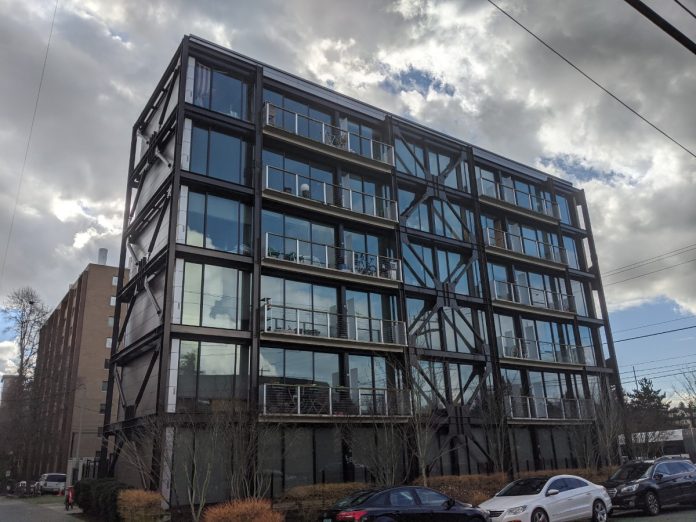The City issued permits on January 17th for another new tower in Belltown, but this one was a little different. The developer, Sustainable Living Innovations (SLI), will prefabricate much of the tower off-site and assemble it into place on-site at 303 Battery St. This 15-story project plays sequel to SLI’s work on the 47+7 building in the U District (six stories) and prequel to three others, a 21-story tower at 901 Madison St, the 16-story residential tower in Alexandria Real Estate’s winning Mercer Megablock bid, and a 40-story tower on 1800 Terry Ave that recently completed design review.
SLI uses its own brand of prefabrication construction, which in its most rudimentary form manufactures the building or its components off-site and then transports the building or its parts on-site for assembly. SLI specifically employs their “kit of parts” modular system that deploys pre-assembled wall and floor panels. That system allow its prefabricated tower to go up in half the time of a conventionally constructed tower, SLI said.
Prefabrication in construction is far from a novel concept. The method has been used throughout history. Claims of its usage stretch as far back as the Romans, and historical records show the methodology’s usage in the 1800s. Significant deployment of the technology was seen in the post-world war era as a means to quickly and economically provide housing.
Prefabrication faded away in the 60’s with critiques of over-standardization, but the methodology has more recently reentered the zeitgeist thanks to the environmental fanfare it has received. The methodology certainly has a strong sustainability pitch, but existing literature complicates the environmental impact of prefabrication.
Environmental impact
After diving into the literature on the environmental performance of prefabrication and the lifecycle performance of prefab buildings, I’m not prepared to join in any fanfare just yet. There have yet to be life cycle assessment (LCA) studies of significant scale to convince me that prefabrication is the overall favorite over conventional construction methods. Several smaller-scale studies do indicate positive results for prefabrication.
Life cycle studies on prefabrication go over the environmental costs of material sourcing, part manufacturing, on-site assembly, building use, and end of life. This is in contrast to conventional methods that spend much less time on off-site manufacturing and more time on on-site assembly and construction.
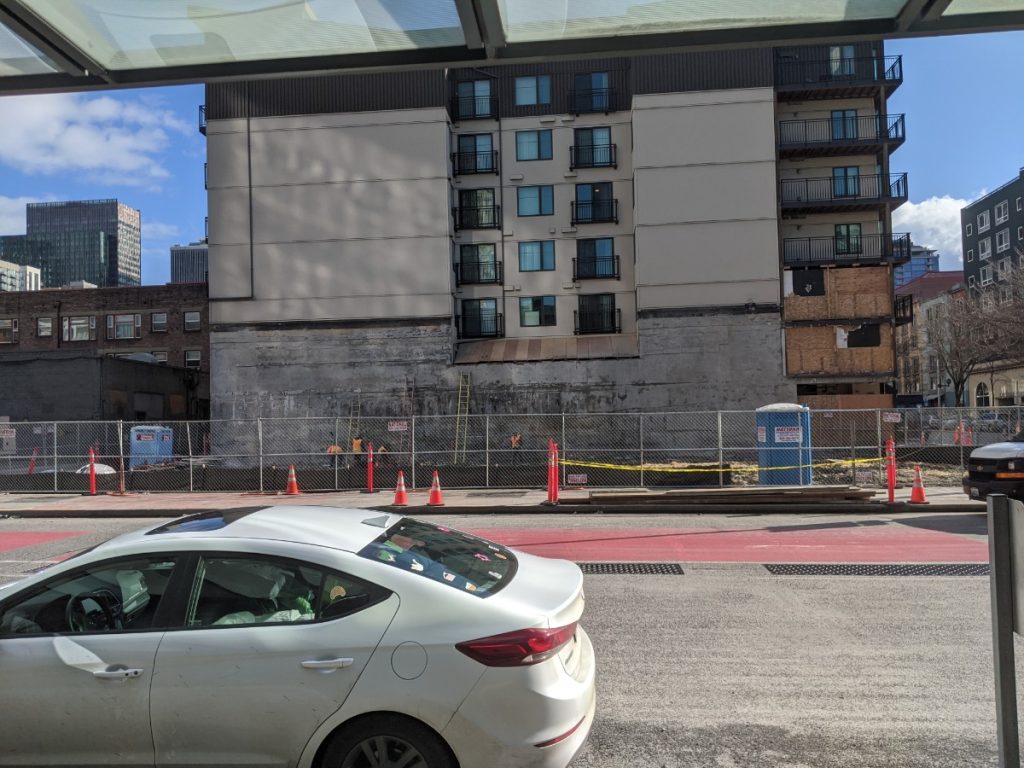
On the material’s front, industry surveys and research have noted significant savings in raw materials. Much of these changes come with fundamental design differences between prefabrication and conventionally constructed buildings. Studies have noted that prefabricated buildings use much less concrete than conventionally constructed buildings. Modular construction, a subset of prefab construction, exchanges concrete for steel frames for structural support.
Differences of design and material usage has allowed prefab projects to save upwards of 60% on total volume. A study out of the University of Melbourne even found a 78% savings in mass for prefab steel framing building, compared to a concrete counterpart. Conceptually, reduced mass should lead to less transportation emissions and less impact from materials, but the literature does not completely back that intuition.
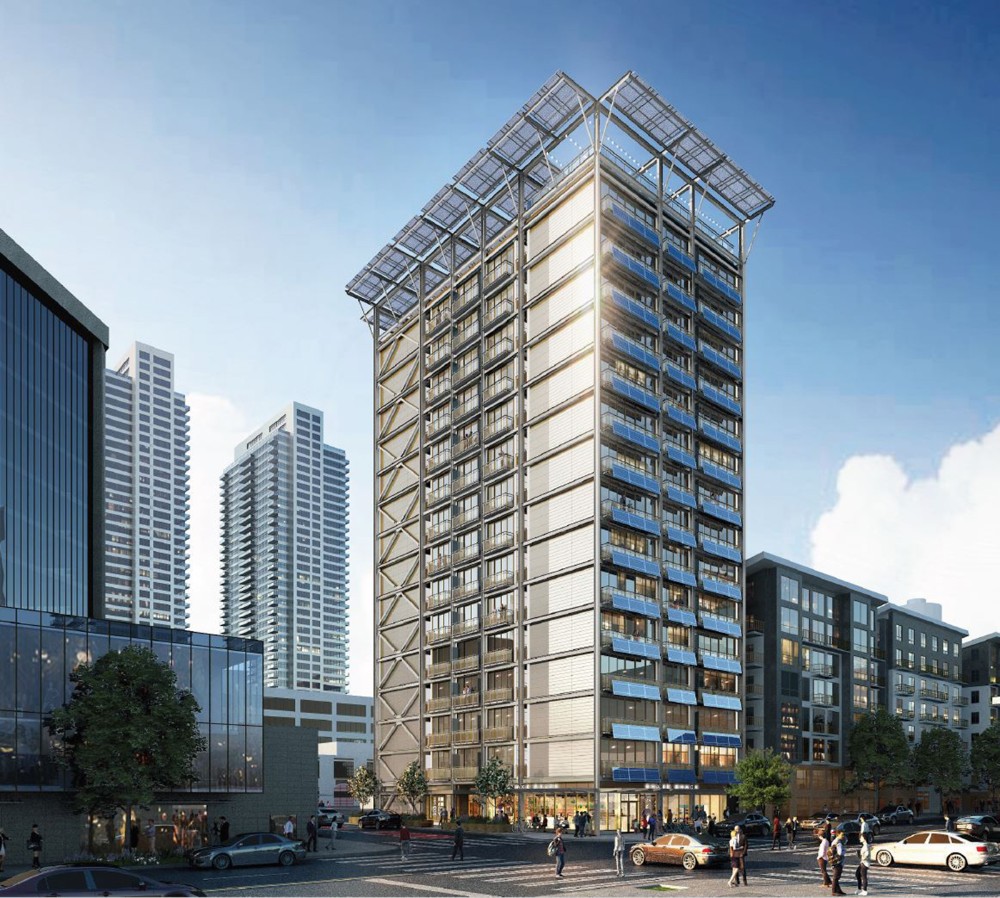
The prefabricated nature of the methodology reduces the density at which parts and modulars can be transported, increasing vehicle miles traveled compared to conventional construction. Inefficiencies in transportation may also occur if the locations of sourced materials, prefab manufacturing facilities, and construction sites are distant and ordered in a non-linear manner. In SLI’s case, their floor and wall panels are assembled by Fast Wall in Tacoma, WA, but their manufacturing facilities are in Knoxville, Tennessee and Calgary, Alberta.
Savings in total volume may not prove environmentally impactful as research on the embodied energy of the methodies shows negligible or negative impact for prefabrication. The embodied energy statistic not only includes energy consumption during material sourcing, but also includes other parts of the environmental impact life cycle like the manufacturing of parts and construction of the structure.
The aforementioned University of Melbourne study also found a 50% increase in embodied energy for the prefabricated steel building. This striking jump in embodied energy may not prove to be too concerning due to the end-of-life advantages that prefabrication has. In fact, researchers include the caveat that 81.3% of the embodied energy in steel buildings could be saved with the recycling of their studied prefabricated structure. Additionally, recycling at end of building life could save 69.1% of timber building’s embodied energy in prefab construction, and 32.3% for concrete structures.
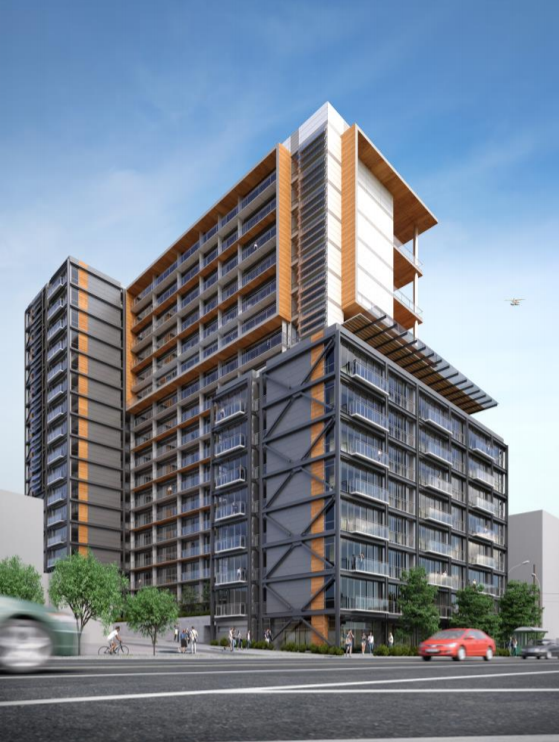
When compared to concrete intensive conventional construction, it’s less energy intensive to recycle prefabricated steel buildings. In particular, the more modular designs can just be disassembled for raw materials. Though given the life span of buildings, this benefit will only be seen in the long term. There’s also no guarantee that recyclable materials will be used, potentially granting the technology a larger footprint than conventional methods.
Reduction in waste can also be achieved in the manufacturing phase of a prefabricated building’s lifecycle. This reduction is also attributable to the longer design process that the prefabrication process has over conventional construction.
A study from the Hong Kong Polytechnic University credits the design process with reducing the amount of late modifications, the cause of most construction waste. Researchers found prefabrication projects had 52% less waste than conventional projects in Hong Kong. However, the study also interviewed developers who noted the decreased flexibility with prefabrication that came with the prefabricated parts and longer design process.
Perhaps the greatest caveat for all the material and energy savings seen in the smaller studies is the environmental impact during the building use stage of the life cycle. An article in the Journal of Green Building emphasized that savings achieved in the other phases of a building’s life are dwarfed by the energy usage over a decades long building use phase. Over a 50-year timespan, 83% of an average building’s energy usage comes from electricity used during the building use phase, researchers found, and 14% came from materials and manufacturing. Shipping, construction, and disposal rounded to 1% each.
There is data that grants prefabricated buildings with an improvement in airtightness that allows for a marginal reduction in building use energy. That said, even the most energy-efficient buildings see the majority of their lifecycle energy from building usage rather than construction.
Big picture, without major changes to the building use phase, these results render much the earlier positive environmental impacts minor. Non-carbon energy usage will make materials and manufacturing dominant environmental factors. Until then, any environmental impact from prefabrication will barely make a dent.
If or when a zero-carbon energy economy comes about, the longer design process of prefabrication could enable architects and developers to explore less impactful materials and manufacturing techniques. Today, these benefits won’t be significant in carbon-intensive energy economies. Nevertheless, prefabrication does have clear benefits other than the currently minor environmental ones.
Other tangible benefits
Despite an unclear environmental case for prefabrication, the methodology certainly can provide other boons to the construction industry. The uptick in prefabrication most likely stems from the cost and time savings, and there may also be worker safety benefits.
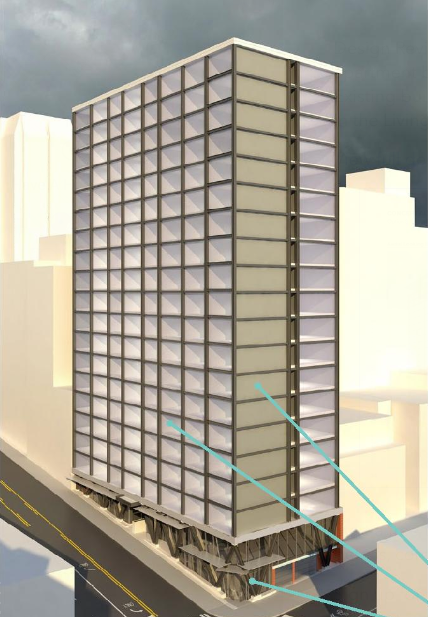
Savings in cost and time are significant with prefabrication. Site preparation and construction of modules and parts can be run simultaneously, while construction has to follow site preparation in conventional processes. Australian researchers found time reductions of about 40% when compared to conventional construction practices. This comes at the financial cost of the previously mentioned long planning phase, which requires more engineers, quality controllers, and skilled laborers.
Elimination of some weather-related delays can also save time. Conventional construction can be significantly delayed by weather condition interruptions. Weather risks are mitigated with prefabrication, since 80-90% of construction activities are conducted inside factories and reduce on-site assembly/construction time.
At scale, multiple prefabrication projects allow manufacturers to order materials in bulk and fabricate parts for many projects. Economies of scale lower the price from suppliers, and reduce the number of labor and transportation hours needed for individual projects. Prefabricated parts also reduce the amount of labor hours required on-site.
The researchers also noted a 25% reduction in labor cost for prefab projects when compared to conventional methods. Lower-cost labor markets can also be accessed with flexible factory placement, furthering lowering labor costs.
Overall reductions in time spent on projects directly translate into monetary savings. Opportunity costs could also be reduced, since shorter project times allow for more projects per calendar year. Exact numbers for savings are generally confidential, but industry surveys have given credence to researcher’s findings. While I will not give the industry surveys as much weight as the studies, they echo much of the research.
A report by SmartMarket found that a large majority of industry respondents observed that prefabrication improved project schedule performance, decreased construction costs, and helped deal with skill labor shortages. The same surveys also found improvement to project quality and project safely.
Evidence for the quality claim exists, but it’s spottier. Credit for quality improvements is given to the factory setting for better quality control than on-site construction. Research on prefabricated buildings’ air tightness demonstrates less air leaking than conventionally-built projects. On the other hand, better project safety has been a common thread throughout my research.
Project safety is among the clearest advantages that prefabrication has over conventional construction. Issues with working at height, congestion, severe weather-related accidents, debris-related accidents, chemical exposure, machinery-related incidents, etc. can be reduced by 80-85%. Studies have attributed this reduction in accidents to decreased labor hours and the factory environment. Factories provide a more controlled environment, where work can be automated, waste is contained, and processes are repetitive.
Other benefits include reduced noise and disruption from reduced onsite construction. These reduction may help relieve complaints from those who protest construction because of noise, but I wouldn’t expect that less noise and disruptions would really impact the worst NIMBY tendencies.
Industry applications and prefabrication today
I mentioned earlier in the article that prefab construction can be less flexible. Inflexibility has skewed how the methodology is utilized by industry. Industry surveys have clearly indicated which use cases are most favorable to prefabrication.
Recent surveys have healthcare facilities continuously at the top for frequency of prefabrication usage. The healthcare industry have responded most favorably to prefabrication’s ability to deliver faster and reduce the need for specialized labor. Smart Market’s report found that 58% of surveyed specialty trade contractors used prefab for healthcare facilities in the past three years, and 40% for general contractors and construction managers used it.
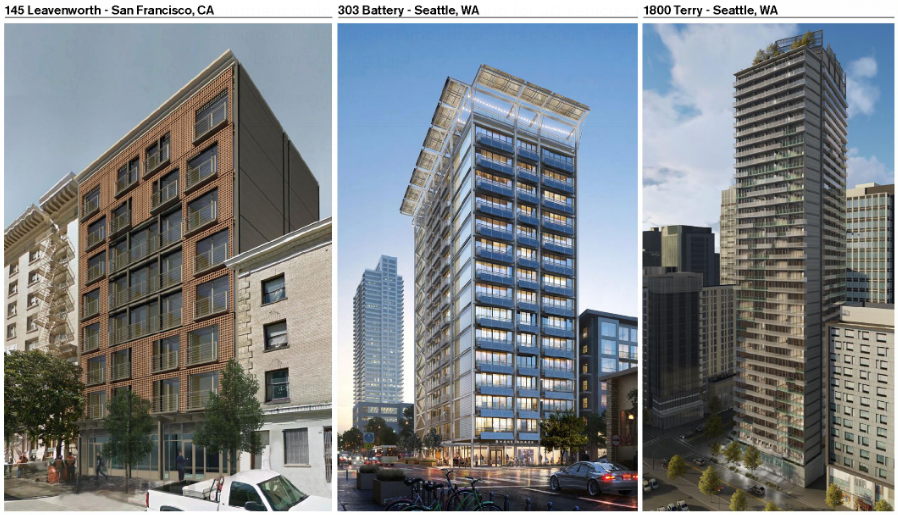
Recent news highlighted the usage of prefabrication in healthcare. The hospital that China constructed in Wuhan to respond to the coronavirus used prefabricated parts. As of writing this piece, China has constructed two hospitals in Wuhan and is planning more around the country to combat the coronavirus.
The Huoshenshan hospital site broke ground on January 23rd and started taking in patients on February 4th. The Leishenshan hospital broke ground on January 25th and is expected to be operating in the same timeframe as Houshenshan. Roughly 26.5 acres of hospital were assembled in under two weeks.
A Wall Street Journal article provides fantastic pictures and graphics to demonstrate how China pulled off this feat with prefabrication technology. I wouldn’t be surprised if Chinese prefabrication factories already had the appropriate modules in storage. The short construction timetables that China is infamous for are likely products of a robust prefabrication industry.
Outside of healthcare, prefabrication has garnered some lesser market shares in multifamily, institutional building, college building and dormitory, and hotel construction. Market share is lowest in construction markets that require the most flexibility, and use of prefabrication in retail is barely detected in industry surveys.
A 2020 Smart Market Report noted that roughly a third of project types are not applicable for prefabrication. Other barriers for industry include prefabrication not being part of project design, project delivery methods preventing effective prefabrication planning, availability of trained workforce, and local availability of prefabrication shops.
Mixed-use and office buildings are also among the project types that are difficult to have prefabricated. Tenants in those project types often require facilities to be reconfigurable, which proves problematic with load-bearing walls.
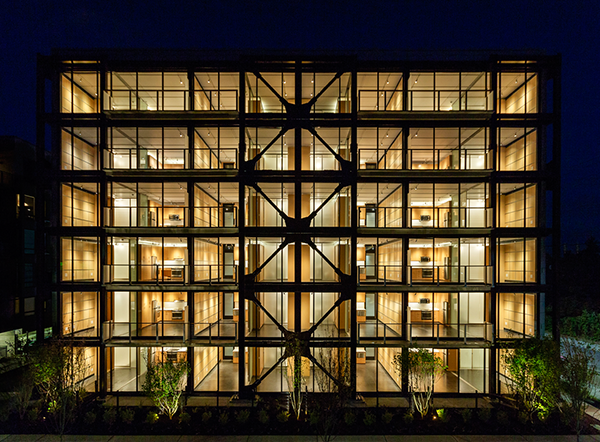
Prefabrication deployment is also low in single-family home construction in the United States. The 2016 census found that roughly 2% of American single family homes were prefabricated or modular. Perhaps American consumers have a preference for individualized homes. Other developed countries sport higher numbers. In Sweden, 84% of detached homes use prefabricated timber elements.
Advances in timber products have attracted the attention of prefab developers. Mass timber as a category of timber building materials has gained popularity as a substitute and accompaniment to steel and concrete support structures. Cross-laminated timber (CLT), nail laminated timber (NLT) and glued laminated timber (glulam) are among the types of mass timber. The timber product is panelized and engineered, complementing the prefabrication process.
Advocates and urbanists have touted the sustainability advantages that mass timber and its umbrella of products have over cement and steel. This argument is paired with the promotion of sustainable logging and proper forestry practices, without which mass timber technology could be as carbon-intensive as concrete. But the potential is there if mass timber scales up at the same time as sustainable forestry.
What’s next for prefabrication
Overall the industry is expected to grow. A strong consensus of market watchers expects that growth will be strong. The Commercial Construction Index expects demand for modular construction to rise. Industry surveys also echo that increase with expectation of growth of frequency at which prefabrication is used across all construction project types.
A technological change to keep an eye on for prefabrication is advances in 3D printing. A rosy view on where 3D printing could go includes on-site printers that rapidly, cleanly, safely, and efficiently print parts with the desired materials at scales required for construction. As much as I believe in technology, my reservation for additive manufacturing places that projected application of 3D printing far into the future.
Perhaps a cultural shift from increased modularity could change how we view the rigidity of cityscapes. If the already high recycling rate of 81.3% return on embodied energy increases, then we could encourage a more dynamic cityscape. Disassembly would be cheap and low impact compared to conventional demolition, and a city’s needs could be accommodated in a faster, more fluid, more environmentally friendly manner.
There’s certainly plenty of promise in prefabricated construction. However, the current state of technology and the scientific literature do not guarantee that prefabrication in construction will be the preferred green alternative for the construction industry.
The risk of more embodied energy from materials used in prefabrication gives me pause. I understand and agree with the strong sustainability aspect of prefabrication. However, the lifespan of buildings as we know them and the uncertainty of proper recycling weakens the sustainability argument for me.
Moreover, the literature emphasizes the need for more study on the life cycle impact of prefabricated buildings. Existing research hasn’t been able to study sample sizes large enough for convincing results, and hasn’t had the time for a proper cradle-to-grave life cycle assessment.
Nevertheless, expect use of prefabrication to increase as more contractors take advantage of its safety improvements and more industries seek to exploit its time and monetary savings. Perhaps SLI’s planned 40-story high rise will become one of many prefabricated buildings dotting our city’s skyline.
Shaun Kuo is a junior editor at The Urbanist and a recent graduate from the UW Tacoma Master of Arts in Community Planning. He is a urban planner at the Puget Sound Regional Council and a Seattle native that has lived in Wallingford, Northgate, and Lake Forest Park. He enjoys exploring the city by bus and foot.


